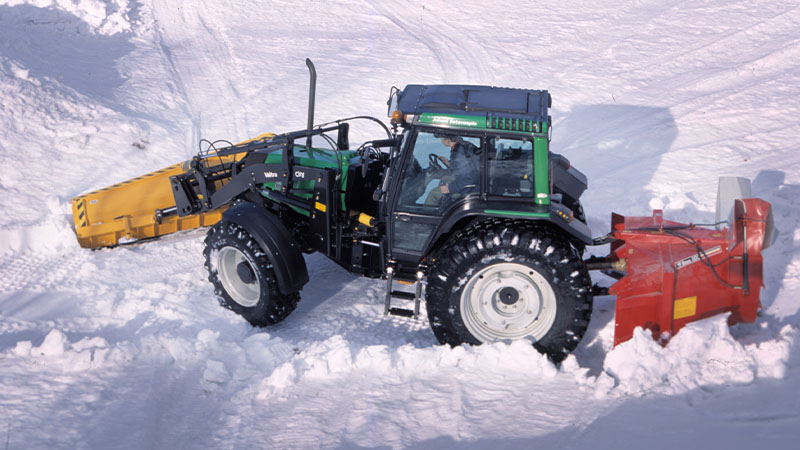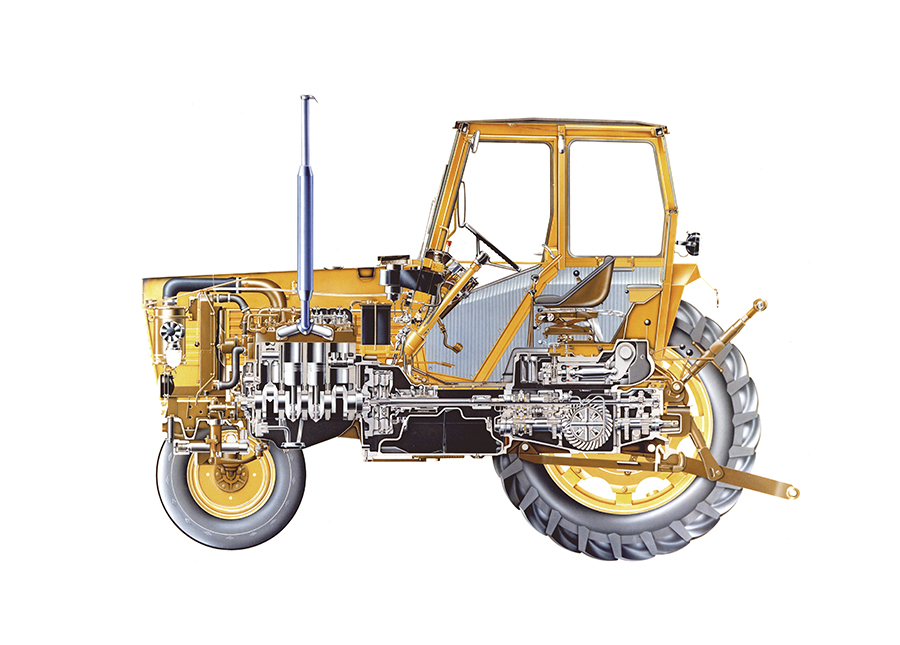Tractor lessons from the Nordics and the UK
For a long time, the Nordic tractor market was managed from the UK. Massey Ferguson was a market leader and Ford was also strong. Nuffield, Leyland, David Brown (and later Case) were major players with an international focus and imported a large proportion of their tractors from the UK. German tractors were rare in the 1960s, 1970s, and 1980s. Deutz was somewhat well known when Fendt was just starting in the Nordic countries and made just a small number of specialist tractors. Certain International models came from Germany and had a reputation for being durable, good machines. Tractors bigger than the Volvo models were mainly sought-after in Denmark and Sweden and, at that time, were imported from the USA.
This was the situation when Valmet bought Volvo BM's tractor production in 1979. Volvo BM, for all its internationalism and strong name, was a very Nordic tractor manufacturer and its competitor base was mainly of UK origin. Of course, the Swedish industrial tradition and its strong quality work gave Valmet something new to learn. Above all, the Swedes knew how to listen to the customer - something that was, in truth, largely new to the industrial engineers of Valmet. From a product perspective, they had their role in “power shifting” and in creating the large cab, the ones whose successors we still enjoy today in the N and T Series.
Watch: Memories of when the factory moved to Suolahti: Aimo Puustinen
Tractors in the 1990s
Volvo BM tractors were never sold in Germany so in the early 1990s, Valmet had entered that market on its own. Since then, tractor traffic between Germany and the Nordic countries has increased in both directions. A third of new tractors in the Nordic countries are now German-built, while British tractors have become rare. In the other direction, the turnaround has been even more dramatic, with sales of Finnish-made tractors in Germany exceeding the 1000-unit mark for several years in a row.
In the early 1990s, Germany was seen as a difficult market with a strong home-grown culture and an even stronger belief in its own industry. But, the single market was on its way, and with the devaluation of the currency and new products, both Finland and Valmet were ready for new challenges. Germany was the first market opening. In Iberia, Valmet worked on its own, but there the work was based on a factory project, while in the Benelux countries, Great Britain and France it started with Volvo BM and the largely Swedish marketing company Scantrac. Only Greece was - and still is - left of the old Valmet importers. Volvo tractors never had an importer in Germany, and neither did Valmet, as its contractual partner Eicher went into liquidation even before the start of the cooperation, the 1991 Agritechnika exhibition. A subsidiary was then set up in May 1992.
Learning more
The recently launched Mezzo series had the basics of fieldwork well covered - both slow speed gears and powershift gear, electronic power lift, and simple main construction. That clarity was perhaps what set Valmet apart from other ‘exoten’ models ('Exoten' was the German term for lesser-known tractors made abroad). For an experienced German ‘Werkstattmeister’, it was pretty easy to figure out how everything worked. And it seemed that many important components were sourced from German or Austrian subcontractors! It was the parts that were visible from the outside and the finishing such as the hood, mudguards, decals and taping that raised more questions.
The adaptation to the market started with local retrofitting of trailer hitches and pneumatic trailer brakes, for which local suppliers could be found. Other importers did the same, with installation. However, Valmet had the advantage of a strong desire to customise tractors at the factory. When the economic depression resulted in a general decline in the demand for tractors, and the company's balance sheet could not support stock production, the customer order system was brought into full operation out of necessity. New equipment was readily accepted on the list if it was thought to help sales. Thus, the basic needs of the market could be met by the factory very quickly. One early example was the front lift, which had recently been prototyped for a Valmet tractor by the Dutch start-up manufacturer Zuidberg, which very quickly became an OEM manufacturer for Valtra.
At that time, it was common for Finnish exporters to say "when you start your German market, be careful, its demand has no limits". Sure enough, tidal waves of product requests started flooding into Central Finland. Not all those needs were easy to meet. For example, a tractor height of less than 2.5 m and an opening windscreen. Valtra achieved these, but only for smaller models such as the A Series. But, some things that seem simple enough took several years - and several company name changes - to achieve; such as a codriver's seat and zero leak hydraulic valves.
One bottleneck was the small product range. The smaller models (below 100 hp), known as the A Series after the turn of the millennium, represented a basic ‘Finnishness’. The suitability of the small models was limited, although they were of course sold in Bavaria in reasonable quantities. High horsepower units, outsourced from BVS, at the time, had outdated specifications. It was more or less only the 6000 and 8000 series that had some possibilities for volume sales in the early years. However, there was frequent demand for a large tractor to suit German tastes, especially when cooperation with Claas, one of the undisputed leaders in the harvester industry, gained momentum in the late 1990s.
Watch: Global markets and customer focus: Arto Tiitinen
Valmet stays different
Valmet had a practical imperative, but also a desire to remain different. Initially, they went with the basic design of a steel fuel tank integrated into the chassis and 45/55% weight distribution. –This was an excellent combination for forestry and perhaps also for heavy traction work, but in tight farmyards and with heavy front implements, the customer might have had other ideas. After over 20 years in the German market, the configuration was finally abandoned in the T Series, while the 4 cylinders models changed 10 years earlier (introduction of N Series). Incorporated with many other improvements, the solution then opened the gates for many new customers to consider Valtra. The 'number series' had already begun to be replaced by the big S Series at the end of the 1990s. However, it was not produced in large numbers, as its technology was too complex in some cases, and the competitors' continuously variable transmissions were already winning over customers.
With improved agility and modern design features like great ground clearance, Valtra refinements were kept. Sales of tractors with the important “Valtra only” feature, TwinTrac, have increased year on year. TwinTrac has always been extremely popular in Austria, which became a Valmet-Valtra market area just one year after Germany.
The popularity of the basic model series grew and, despite redesigns, the robust basic character was maintained. Good engines also brought fame. Most tractor manufacturers now offer 'boost power', but Valmet developed that concept and it won the DLG gold medal at Agritechnica in 1997. SigmaPower was already able to bring much-needed increased power to the customer, albeit only for PTO work. A couple of years later, Valtra introduced Aires, the first (and still only) air-suspended front axle on tractors! The ever-vigilant German trade press tried to describe the function with numbers and was at first not very convinced. But, fortunately, the customers took a different view, and the concept is now a basic feature of new Valtras. Honestly speaking, the first generation Aires looked a bit like it was forged by a blacksmith-made, but it worked well! Now, of course, it is much refined.
Valmet became Valtra but has remained at the forefront of mass tailoring, even though several other manufacturers have more or less followed in the same direction. Germany is certainly an example of a market where customers have very different needs. Many options are already consigned to the past, such as the “Saatengrün” -colour or the choice of two different wheelbases, but overall the range of options has only grown year on year.
One can have a look for example at Valtra’s German order book for the 5th generation T Series. An individual choice of colour is one typical Valtra offering, both those offered from the production line and via Unlimited Studio. The most popular choice is metallic black, and the second the new green colour. Together, they make up half of all new Valtra Sales in Germany. Luxury interiors also sell well, with nearly two-fifths of T Series customers selecting this option in Germany. In total, over one-third of all T Series sales in Germany have been through the Unlimited Studio.


